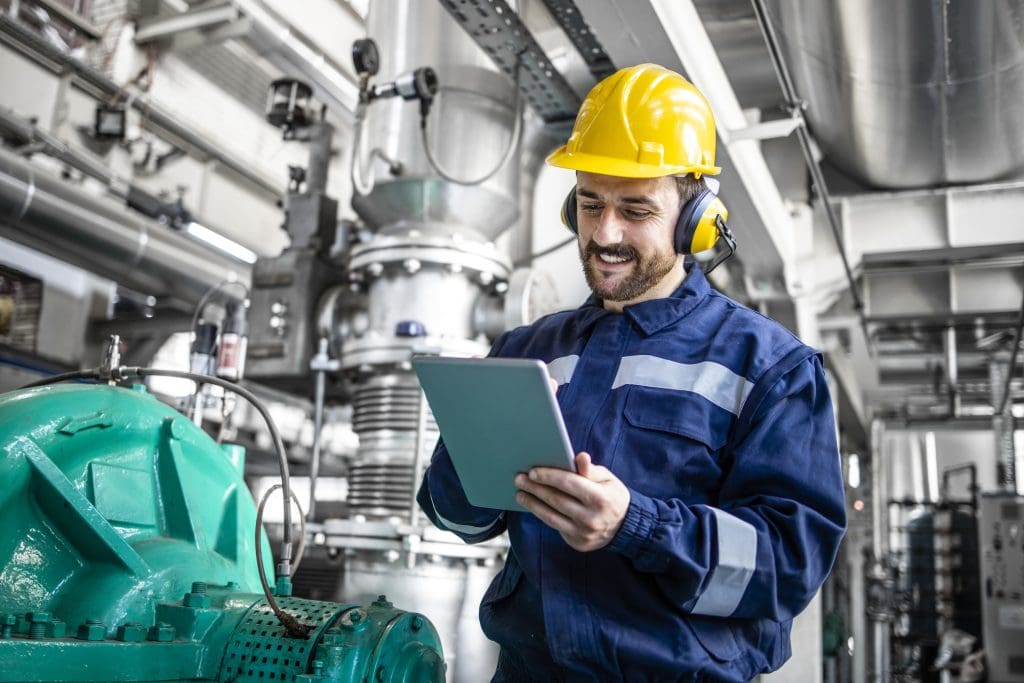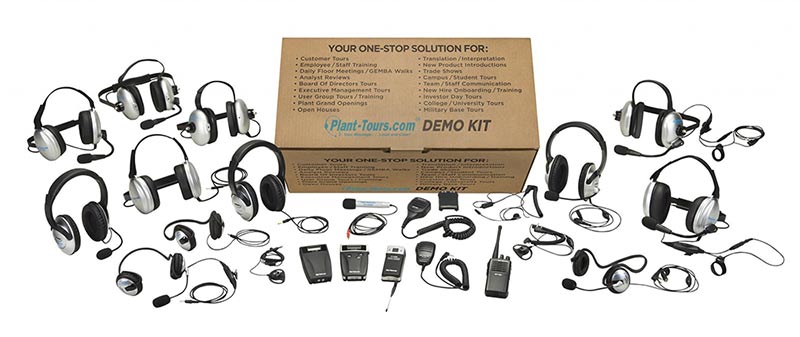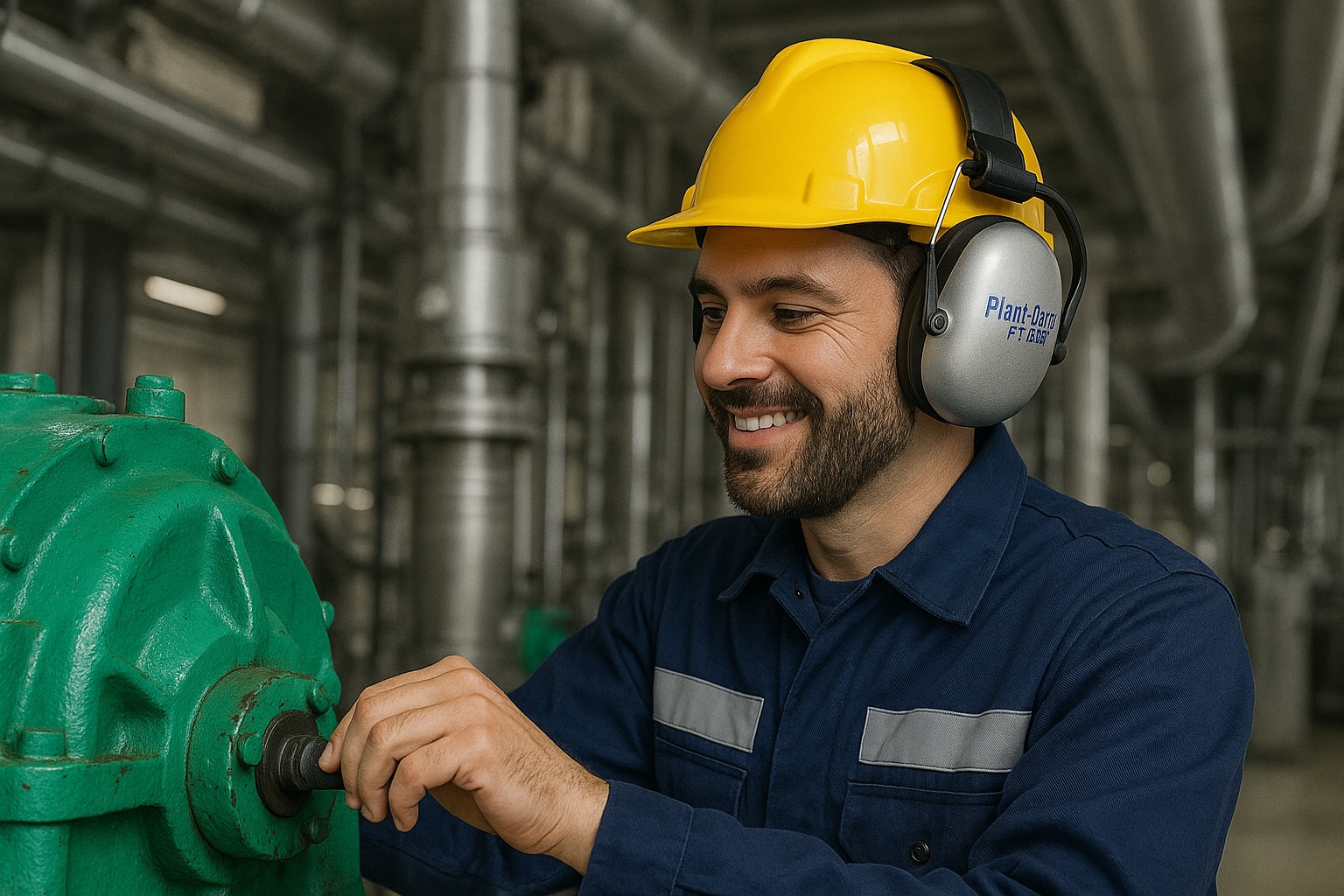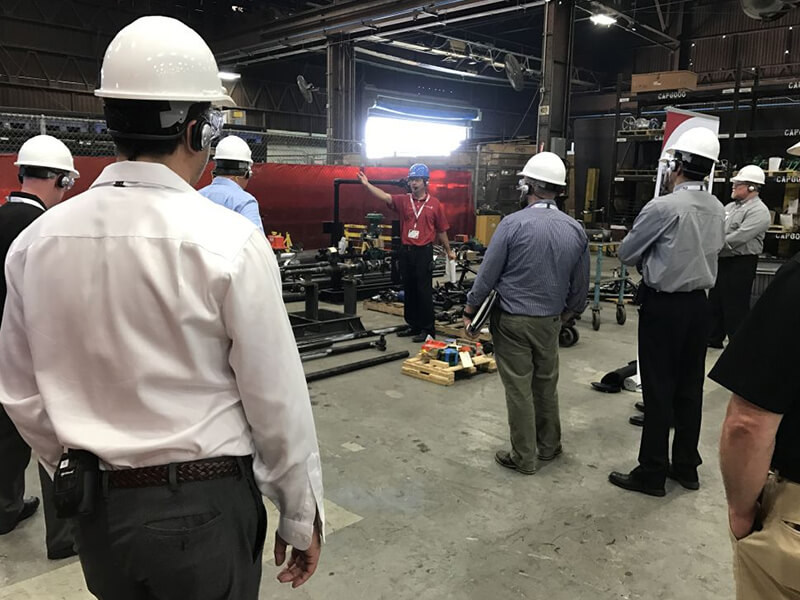In many work environments, loud noises are extremely common. Having the right personal protective equipment (PPE) for your ears is usually the first step in ensuring everyone in those environments remains healthy and safe. But hearing protection devices (HPDs) come in many forms. Choosing how exactly to keep your ears safe can, therefore, be a delicate art. In fact, having the wrong hearing protectors can even end up doing more harm than good for the wearer. I’ve compiled a few tips below to help you choose the best hearing protection for you and your team.
What You Should Consider When Choosing Hearing Protection

It may seem like choosing hearing protection is as simple as keeping your ears covered, but there are several important factors to keep in mind. From all-day comfort to compatibility with your other equipment, there’s a lot to consider. I’ve got you covered—check out this list of things your hearing protection should cover:
- Noise Level — First and foremost, the hearing protection’s Noise Reduction Rating (NRR) has to be enough to cover the specific noise levels encountered in your working environment. Higher noise levels require higher NRR protection to adequately safeguard hearing, so this is not something to skip over.
- Comfort — Like with the rest of your gear, your hearing protection needs to be comfortable enough to wear all day long. If it’s too tight, heavy, or hard, you may be willing to make unsafe decisions like choosing to go without it rather than put up with the discomfort.
- Fit Type — Different fit types, such as earplugs (foam, reusable, custom-molded) and earmuffs, offer varying levels of protection and comfort; choosing the right type depends on individual preferences and the specific work environment.
- Durability — You often work outside in extreme temperatures, extremely dusty and dirty worksites, and less-than-desirable weather. Your hearing protection should be durable enough to withstand all of that and more.
- Environmental Suitability — I believe it’s our responsibility to minimize our impact on the environment, so I always recommend finding hearing protection that is manufactured with as little waste as possible. Look for equipment made from long-lasting materials that won’t need to be frequently replaced.
- Ease of Use — The last thing you need is to be wrestling with your safety equipment while trying to protect yourself at work. Your hearing protection should be easy to put on, take off, and adjust. If you’re struggling to use it properly, you’re less likely to use it consistently.
- Compatibility — Hearing protection isn’t the only PPE you use every day, and it’s important that all of your safety equipment works together to keep you protected. Hard hats, safety glasses, and masks should all be taken into consideration when choosing your hearing protection so that none of your PPE interferes with each other.
- Water Resistance — Whether you work near water or just deal with exposure to rain or moisture, your PPE needs to be able to protect you through that. For work environments involving moisture or water exposure, choose water-resistant or waterproof hearing protection to prevent degradation and maintain effectiveness.
- Cost-Effectiveness — Ideally, cost should not be a factor in choosing equipment that keeps us safe at work. But realistically, we have to balance the cost of the hearing protection with its level of protection, durability, and comfort to ensure a cost-effective solution that adequately protects hearing.
The Importance of Hearing Protection
Noise levels across different environments vary greatly, with strident sounds in places like nurseries, construction sites, rock concerts, etc. But loud noise goes hand-in-hand with industrial workplaces like manufacturing facilities, factories, and production plants. Having hearing protection is particularly vital for plant managers and factory workers, as well as anyone visiting such a facility. Regardless if it’s subtle or sudden, human or mechanical, brief or for long periods of time — excessive noise exposure is never a good thing. Not only is it bothersome, but it also poses an array of health and safety risks.
Understanding the Hazards of Noise Exposure
“22 million workers are exposed to potentially damaging noise at work each year.” Center for Disease Control
Hearing loss and overall hearing damage are the most common hazards associated with noise exposure. When the sound levels we consistently experience go above a certain point, our ears react, and eventually become less sensitive. This is known as a hearing threshold shift (TS). While a TS is how mother nature initially intended for our ears to protect themselves, it can ultimately damage the ear — sometimes permanently.
Exposure to loud noises can also cause irritability, anxiety, fatigue, depression, stress, and several other physical and/or mental health issues. Plus, it can be a recipe for miscommunication, poor productivity, and workplace accidents. In other words, the potential harm done by excessive noise goes well beyond just the human ear.
Hearing Protection for Different Environments
The actual level of protection your ears need will depend on a few things. Your environment, the length of exposure, and the nature of the noise itself will all help you determine the right equipment.
For example, are you working daily in an industrial, manufacturing, or construction setting, or are you just using a few heavy-duty power tools to make some home repairs? Is there more than one source of noise? Are the sounds you’re exposed to low-frequency, high-frequency, or both? Do you need to hear and be heard despite the noise around you? All these are key factors and should not be overlooked.
But how much protection you need ultimately comes down to how many decibels you’re dealing with. I’d like to show you a couple of examples of when these differences come into play.
MT-250 Max Noise Headset
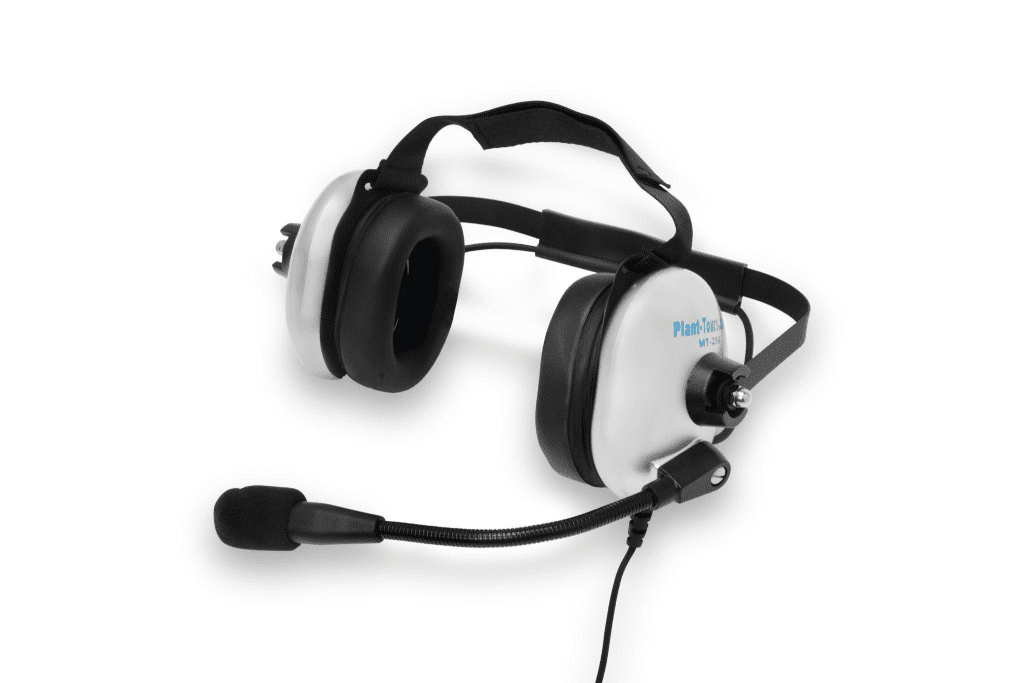
When you’ll be working in the loudest environments, you need the best possible protection. Communication headsets for noisy environments like the MT-250 keep you engaged with your team while also prioritizing your safety.
MT-370 Moderate-High Noise Headset
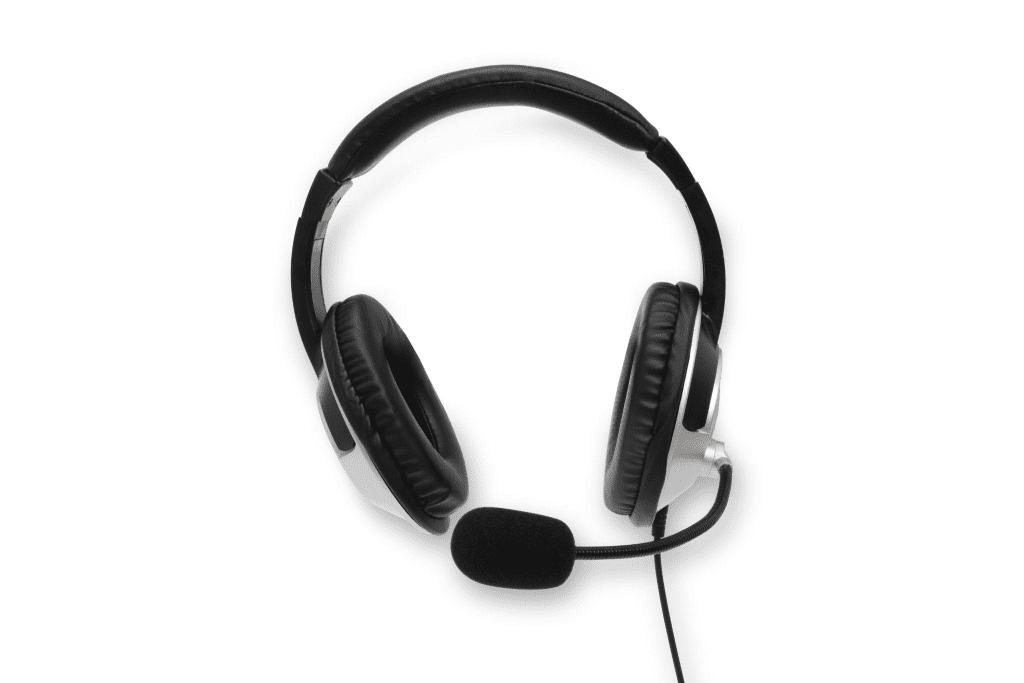
When it’s not quite as loud but protection is still indicated, the MT-370 is a great option for blending ear protection with the specs needed to reduce noise and enhance communication.
How to Evaluate Noise Reduction Ratings (NRR)
The aforementioned threshold shift in our hearing usually occurs when sound levels go above 70 decibels (A-weighted), aka 70 dbA. The U.S. Environmental Protection Agency (EPA) and the World Health Organization (WHO), therefore, recommend keeping the noise down to a level below 70 dBA over a 24-hour period, and below 75 dBA over an 8-hour period. Anything higher usually calls for some form of hearing protection.
Meanwhile, the Occupational Health and Safety Administration (OSHA) has what they refer to as the “Action Level” (or AL), set at 85 dbA. Any sound approaching the AL can be considered potentially dangerous — and that’s when employers and employees in the U.S. are required to act and safeguard their ears.
The National Institute for Occupational Safety and Health (NIOSH) recommends that workers exposed to noise levels above 100 dbA (for an average of 8 hours a day) wear double hearing protection (or DHP). For example, the average noise level of a chainsaw is between 105-120 decibels. So if you’re a full-time lumberjack, you might consider using DHP.
There are countless easy-to-use noise-measuring devices available today, including an app from NIOSH. To determine the noise levels (i.e., decibels) in your particular environment, check out these tools to ensure you have the data you need to remain protected.
Determining Your HPD’s Noise Reduction Rating
Once you know your overall decibels, you’ll want to know your potential devices’ noise reduction ratings (NRRs) too. Regulated in the U.S. by EPA and the American National Standards Institute (ANSI), NRRs are what measure how well your device actually reduces those pesky decibels.
OSHA has a standard for calculating the NRR of a particular device. To determine how many decibels of exposure are reduced, subtract 7 from the NRR — and then divide that number by 2. For instance, if your device has an NRR of 33, it’s technically eliminating 13 decibels from the incoming noise.
Making the Right Choice for Long-Term Hearing Health
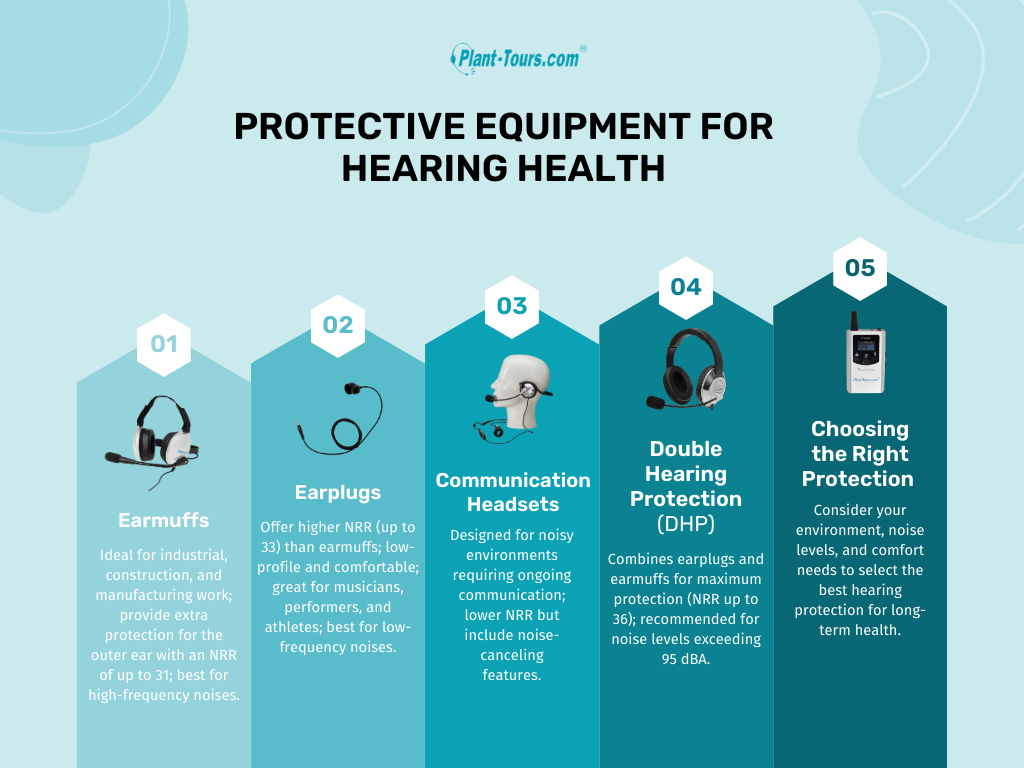
The various hearing protectors available today come in all shapes, sizes, and colors — each with their own unique science, functionality, and level of protection. But here’s what HPDs you generally have to choose from today:
Earmuffs
Earmuffs are commonplace for anyone such as airport personnel, DJs, race car drivers, and even the military. They’re especially useful in the industrial, construction, and manufacturing sectors too — as their ear cups provide an extra layer of protection for your outer ear. A pair of standard earmuffs usually provides enough attenuation to protect your ears from noises measuring between 70 to 85 dBA. The highest NRR for earmuffs is 31, and they’re generally better for high-frequency noises.
Earplugs
Meanwhile, earplugs can offer a higher NRR than earmuffs — the highest being 33. While a lot smaller, they actually provide more protection for your ear. Earplugs are also generally more comfortable and low-profile. For example, foam earplugs adjust to the shape of your ear canal. They usually don’t require a headband — which makes them ideal for musicians, performers, athletes, and anyone on the move and/or who needs to wear other PPE such as helmets. Earplugs are also your best bet when dealing with low-frequency noise.
Communication Headsets
If your environment is both noisy and requires ongoing communication between people, then consider one- or two-way communication headsets. While their NRRs are usually lower than those of standard earmuffs and earplugs, they offer a whole new level of communication when things get loud. Not to mention they come with several different noise-canceling and other capabilities too.
Double Hearing Protection
Finally, if things get really, really loud —then you might want to opt for double hearing protection (DHP). While DHP is not common, simply combining earplugs with earmuffs can offer an NRR of 36 — meaning you should be good to go even when noise levels exceed 95 dbA.
All in all, the type of hearing protection you opt for will ultimately depend on a number of different factors. Understanding your environment, your options, and the science behind them will give you a good idea of what suits your ears best, providing you with proper protection.
Common Mistakes to Avoid When Choosing Hearing Protection
Construction sites are notoriously loud environments. The constant hammering, drilling, sawing, and operation of heavy machinery create noise levels that can quickly and permanently damage hearing. Protecting your hearing on a construction site is non-negotiable, and choosing the right hearing protection is a critical part of that protection. However, many construction workers make common mistakes when selecting their hearing protection, putting themselves at risk for noise-induced hearing loss. This article outlines four common mistakes and provides guidance on how to avoid them.
1. Choosing Inadequate Noise Reduction Rating (NRR)
The Noise Reduction Rating (NRR) is a crucial factor in determining the effectiveness of hearing protection. It indicates the amount of noise reduction the device provides, measured in decibels (dB). A higher NRR signifies greater noise reduction. A common mistake is selecting hearing protection with an NRR that isn’t sufficient for the noise levels encountered on the job site. Construction sites often have noise levels exceeding 100 dB, requiring hearing protection with a high NRR to provide adequate protection.
Why it’s a mistake — Using hearing protection with a lower NRR than necessary means your ears are still being exposed to harmful noise levels. Over time, this can lead to gradual and irreversible hearing damage. Even if the noise seems “tolerable,” prolonged exposure can be detrimental.
How to avoid it — First, understand the noise levels present on your construction site. Noise level meters can be used to measure the actual noise levels. Then, choose hearing protection with an NRR that is appropriate for those levels. Generally, for construction work, hearing protection with an NRR of 25 or higher is recommended. Remember, the NRR is a theoretical value, and the actual noise reduction achieved can vary depending on how well the hearing protection is fitted and used. It’s always better to err on the side of higher protection.
2. Prioritizing Comfort Over Protection
While comfort is important, it should never come at the expense of protection. Some workers choose hearing protection that is comfortable for short periods but doesn’t provide adequate noise reduction. This might include foam earplugs that don’t fit properly or earmuffs that don’t create a tight seal.
Why it’s a mistake — If hearing protection isn’t worn correctly or doesn’t provide a proper seal, it won’t effectively block out noise. Gaps or improper fit can significantly reduce the NRR and leave your hearing vulnerable. Choosing comfort over protection defeats the purpose of wearing hearing protection altogether.
How to avoid it — Look for hearing protection that offers both comfort and a high NRR. Consider different types of hearing protection, such as foam earplugs, reusable earplugs, and earmuffs, to find what works best for you. Ensure a proper fit by following the manufacturer’s instructions. For earplugs, this often involves properly inserting them into the ear canal. For earmuffs, ensure the earcups completely enclose the ears and the headband provides a snug fit. If you find certain types uncomfortable, explore alternatives. For example, if standard foam earplugs irritate your ears, try custom-molded earplugs.
Neglecting Proper Maintenance and Replacement
Hearing protection, like any other piece of safety equipment, requires proper maintenance and timely replacement. Earplugs can become dirty or damaged, reducing their effectiveness. Earmuff cushions can wear out, compromising the seal and reducing noise reduction.
Why it’s a mistake — Using damaged or dirty hearing protection can significantly reduce its effectiveness, exposing your hearing to harmful noise levels. Contaminated earplugs can also increase the risk of ear infections.
How to avoid it — Regularly inspect your hearing protection for signs of wear and tear, such as cracks, tears, or deformation. Clean reusable earplugs according to the manufacturer’s instructions. Replace disposable earplugs after each use. Replace earmuff cushions when they become worn or cracked. Store your hearing protection in a clean and dry place to prevent damage and contamination.
4. Failing to Use Hearing Protection Consistently
Perhaps the most common mistake is failing to wear hearing protection consistently, even for short periods of exposure to loud noise. Many workers underestimate the cumulative effect of noise exposure and believe that short periods of exposure won’t cause damage.
Why it’s a mistake — Noise-induced hearing loss is cumulative. Even brief exposures to high noise levels can contribute to permanent hearing damage over time. Removing hearing protection, even for a few minutes in a noisy environment, can significantly increase your risk of hearing loss.
How to avoid it— Develop a habit of wearing hearing protection every time you are in a noisy environment, regardless of how short the exposure time. Keep hearing protection readily available and easily accessible. Make it a routine part of your personal protective equipment (PPE) and treat it as seriously as you would any other safety gear. Remember, protecting your hearing is a long-term investment in your health and well-being.
By avoiding these common mistakes, construction workers can significantly reduce their risk of noise-induced hearing loss and protect their hearing for years to come. Remember, hearing loss is permanent and irreversible, so taking proactive steps to protect your hearing is essential.

